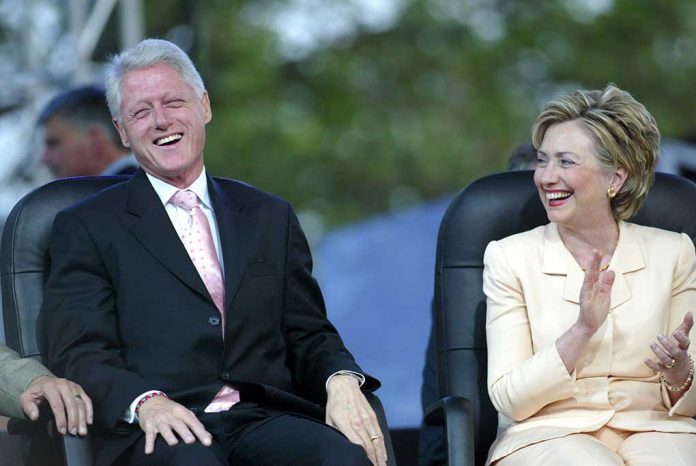
With plummeting birth rates, Bill Clinton suggests immigration could be the answer to America’s labor woes.
At a Glance
- U.S. birth rates have declined significantly, prompting concerns about future economic growth.
- Bill Clinton proposes increased immigration as a means to address labor shortages.
- Critics argue that this could lead to wage pressures and housing market inflation.
- The debate underscores the complexities of balancing immigration with domestic population growth needs.
Immigration as a Solution to Labor Shortages
Former President Bill Clinton has proposed greater immigration as a strategic solution to counteract the effects of declining birth rates on the U.S. economy. By introducing more vetted immigrant workers into the labor force, Clinton believes that America can offset labor shortages and stimulate economic growth. This suggestion comes amid growing concerns about how demographic declines are impacting developed countries worldwide, prompting economists and policymakers to explore various solutions.
The former president’s remarks have sparked debate, drawing accolades from those who see immigration as a lifeline for the economy and criticism from opponents who fear potential negative repercussions. Those in favor argue that immigrants contribute significantly to economic development, while detractors raise concerns about wage pressures and housing shortages.
Bill Clinton says America needs mass immigration: “We got the lowest birth we’ve had in well over 100 years. We’re not at replacement levels which means we’ve got to have somebody come here if we want to keep growing the economy.” pic.twitter.com/t6HQFnxEZf
— TheBlaze (@theblaze) October 14, 2024
Economic Realities of Immigration
While the influx of immigrants can potentially boost national wealth, there are complex dynamics at play. Research indicates that a 10% increase in workers with specific skills can lower wages for that group by about 3%. This poses challenges for low-skilled American workers, including African-American and Hispanic communities, who may face job and wage competition.
“Decades of record immigration have produced lower wages and higher unemployment for our citizens, especially for African-American and Latino workers,” said Donald Trump.
Clinton’s economic strategies during his presidency, including fiscal discipline and market expansion, facilitated considerable growth and job creation. His current stance on immigration seeks to mirror these principles by filling employment gaps and fostering an environment where economic progress persists amid demographic shifts.
VIDEO – Bill Clinton: We Need Immigrants to Counter Americans’ Low Birth Rate https://t.co/UlC1f532b5
— Grabien (@GrabienMedia) October 14, 2024
Balancing Policy for the Future
The debate around Clinton’s suggestions highlights the multifaceted nature of immigration policy. While some view increased immigration as a beneficial driver of economic prowess, others caution against unintended consequences such as reduced job opportunities for native low-skilled workers and overstretched public resources.
“In terms of where the economy would be four years and 10 years from now, the real difference, the game changer between the two [presidential candidates] is immigration,” said Mark Zandi, chief economist at Moody’s Analytics.
As America continues to navigate the complexities of economic policy, the discussion of immigration’s role remains a contentious issue. Clinton’s approach, advocating for carefully vetted immigration, offers one potential avenue for addressing the dual challenges of labor shortages and economic sustainability in light of ongoing demographic changes.
Sources
1. Yes, Immigration Hurts American Workers
2. Clinton’s immigration plan could help economy more than Trump’s, most economists say









